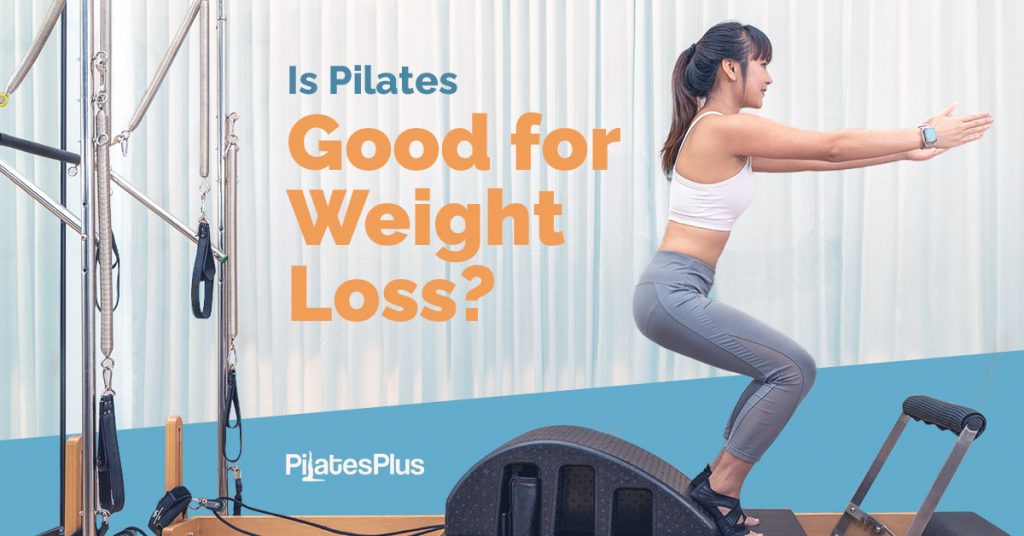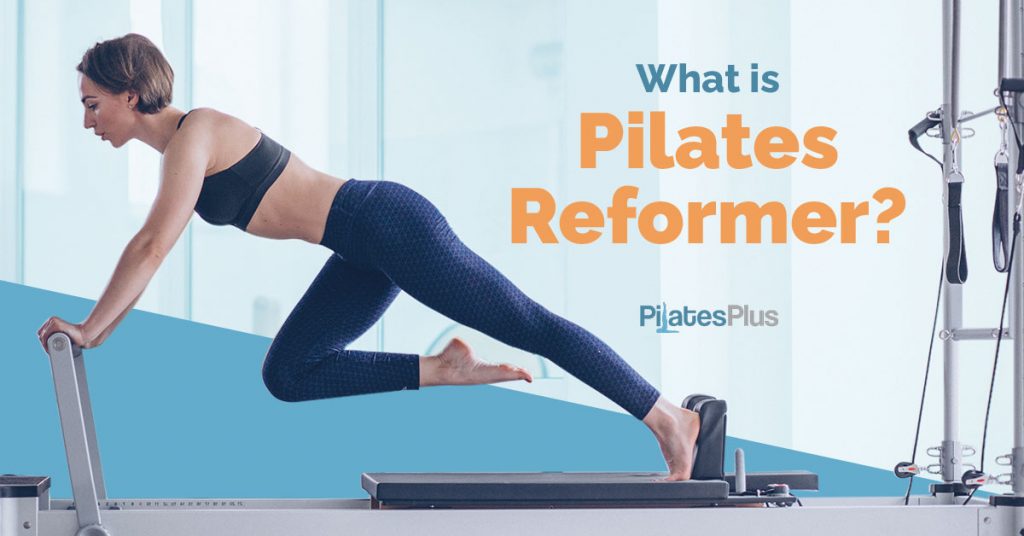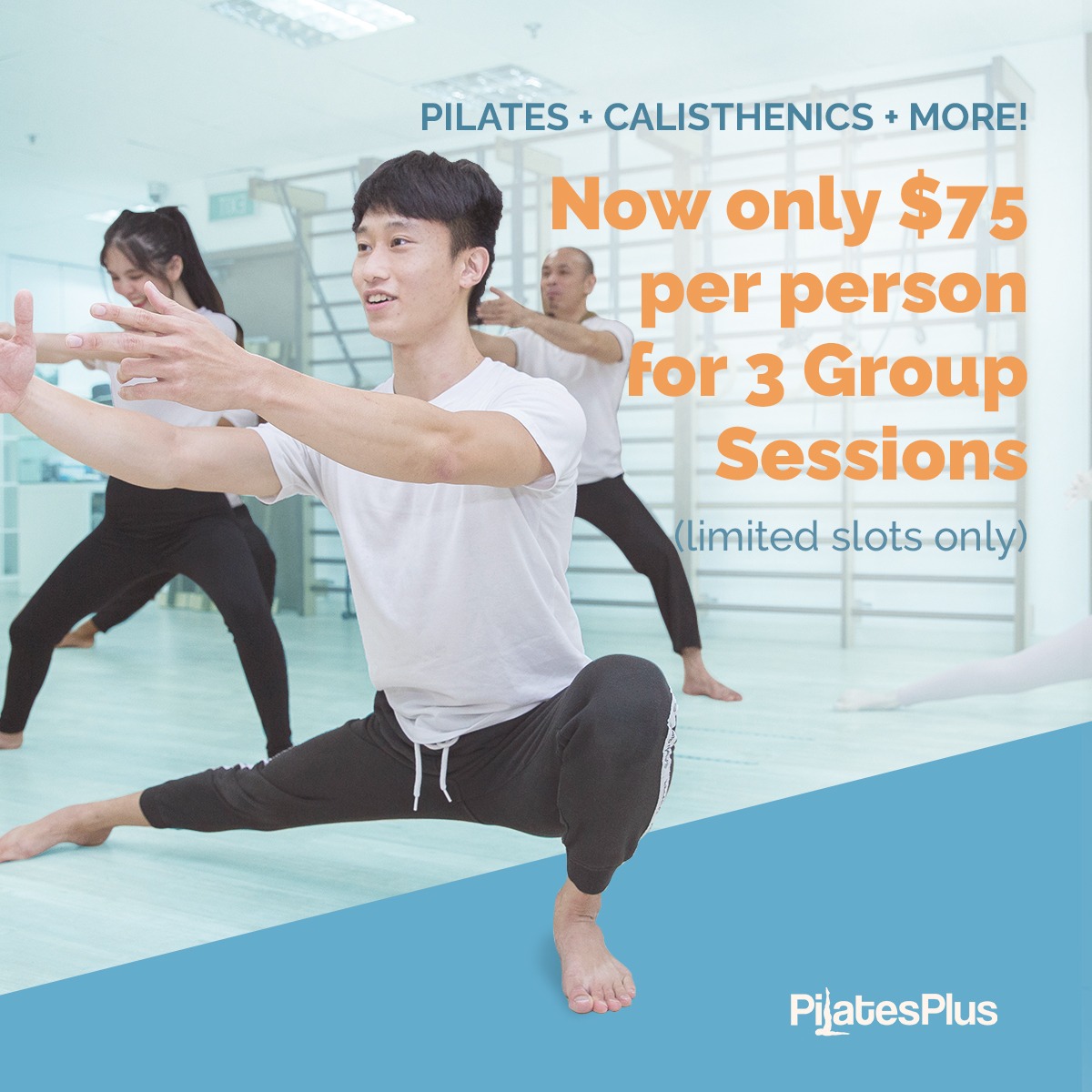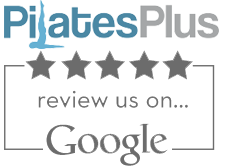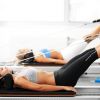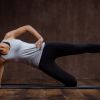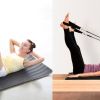PilatesPlus Blog
Home »
How Do You Breathe in Pilates: Why is it Important!
One of the things that stand out the very first time I visited a Pilates studio was the sound of the breathing technique. I was attending a Ron Fletcher workshop at that time in the early 2000s, and that is when I got introduced to Pilates breathing. The detailed manner of doing Pilates exercises is already challenging enough and adding the breathing technique can be confusing, but at the same time refreshing in a way, especially if you are new to the method.
You breathe in Pilates by inhaling through your nose and exhaling through your mouth while bracing your abdominal muscles the whole time. Your ribs will expand to the sides and front on the inhalation, and the ribs will close down and in on the exhalation. Your abdominal muscles will be braced the whole time.
Breathing is the first principle Joseph Pilates introduce when he started teaching his work. It makes sense as it is the foundation of every movement when you are practicing Pilates. Let us look further into the breathing technique so you can incorporate it better into your practice.

1. Inhale through your nose
According to this article from Cleveland Clinic, three important things will happen when you inhale through your nose. Temperature control, filtering, and humidifying.
As the air goes through our nose, either it is too hot or too cold, our nasal passage will adjust the air temperature that goes in to match our body’s temperature.
The hair-like structure inside our nasal cavity will filter small particles from the air that we breathe in, unlike when breathing in through the mouth, which will send unfiltered air to the lungs.
The air inside our nasal cavity is very humid, which will humidify the air that comes in through our nose. This humidification will help in extracting oxygen when the air goes to our lungs.
It is important that when you are breathing in a Pilates movement, that you have to inhale deeper than you normally would so you will be able to condition your breathing at the same time; this will serve as the timing for your movement.
2. Brace your abdominal muscles
One of the main cues that you can hear in a Pilates class is lengthening your spine or posture. This will be achieved by thinking that you’re wearing a tight corset the whole time.
This practice will help you to control the natural corset muscle of your body which is called the Transversus abdominis muscle which is shape like a big belt that is around your waistline.
Not only will you look slimmer without losing any weight, but you will also feel a lot taller with your posture at the end of the class.

3. Expand your ribs to the side
If you are concentrating well on keeping your abdominal muscles braced the whole time, there is nowhere for the air to go after the inhalation except to expand the ribs outside.
There are two breathing mechanisms that will happen here:
- The bucket handle mechanism is the expansion of your ribs to the side as the air goes in as you inhale.
- The pump handle mechanism is the upward and forward movement of your chest bone as you inhale.
Both of these mechanisms will release the muscles between your ribs, which most likely is tight, knowing that our lifestyle revolves mainly around sitting down facing the computer or holding our mobile phone. And if you don’t really exercise heavy enough where you end up running out of breath, your ribs and the muscles in between them (intercostal muscles) will never get the experience of being stretch fully as you’re breathing.
4. Exhale through your mouth
Exhaling through the mouth may not be the natural breathing pattern in general but when doing Pilates exercises, the air coming out through the mouth will have quite a few benefits.
- Unlike exhaling through your nose, you can control the airflow when you exhale through the mouth.
- Pursed-lip breathing where you keep your lips tight as if you’re making a hissing sound as you breathe out will allow you to exhale longer.
- The ability to control the length of your exhalation will allow you to time your movement well.
- Controlling your exhalation with pursed-lip breathing will also force the abdominal muscles to contract further in squeezing all the air out, further strengthening them.
- Prolonging the exhale will also increase your carbon dioxide tolerance, resulting in your being more relaxed in general.
5. Your ribs go in and down
As you exhale, you want to make sure you exhale all the air out. This will help you cleanse your system and contract the abdominal and intercostal muscles.
Two other variations of Pilates breathing
In addition to the standard Pilates breathing technique, we teach in our Pilates studio two more variations that you can work on to add more challenge to your practice.
- One lung breathing
This is technically expanding one side of your ribs by contracting the other sides slightly. This breathing technique requires you to focus more and it will really help you understand your body’s capacity to breathe in different ways.
An easy way to practice this is by pressing one hand to the same side of your ribs (right hand on right ribs), the try to push your hands with your ribs on the inhalation phase of the breathing.
- Percussive breathing
This type of Pilates breathing is loud in nature as it requires you to breathe out stronger in pursed-lip breathing with a percussive timing. For example, you breathe in for two beats in succession and breathe out two beats as well. The number of beats can be increased to as many as ten beats in and ten beats out to challenge your breathing pattern.
Why is Pilates breathing important?
- Paying attention to your breathing will help you concentrate more on your movement. It will serve as your timing once you are more familiar with the exercises. It might be tougher at first, but you will soon get the hang of it, and it will be just automatic.
- The pilates breathing technique will help improve your circulation as you are not just breathing normally but you are trying to go deep in both inhalation and exhalation.
- The timing of your breath will serve as the rhythm of your movement
- It helps you target the core muscles early on in the exercise session.
- As you are working on expanding and contracting your ribs during the breathwork, it will mobilize the rib and thoracic area, which can be generally tight on most people.
- Doing the breathing in the warm-up of your Pilates session will help you observe your posture better. With the bracing of the abdominal muscles, you’ll be able to lengthen your spine, which will help prevent the hunching of your back as you grow older.

How to start practicing Pilates breathing?
Breathing in Pilates is incorporated all throughout the session, whether it is a Pilates mat, Reformer group, or a Private Pilates class.
To get started with your practice, you can work on these six positions to get familiar with the technique.
- Standing
- Sitting position
- All 4s position (On your hands and knees)
- Supine position (Lying on your back)
- Side-lying
- Prone position (Lying facing down)
You need to understand how you are able to apply the breathing technique in different positions, as it will get more complicated as you incorporate the movements in the latter part of the session.
Is Pilates Good for Weight Loss?
If you are trying to lose weight, then Pilates is a good weight loss exercise. The goal of Pilates is to increase lean muscle mass, which is great when you’re trying to lose weight. That’s because when people are losing weight, they are losing muscles along with it.
From Pilates Mat to Pilates exercises using an apparatus, Pilates helps you retain a healthy level of muscle mass as it’s a form of strength training or resistance training. Think of a body that’s lean and long like a dancer’s instead of bulky and compact like a bodybuilder’s.
Picture this: if you weigh about 150lbs and you do beginner Pilates for 50 minutes, then you shed about 175 calories. Our muscles continue burning off calories even after working out so, the longer you’re at it, the stronger and shapelier you get.
For best results, combine Pilates with a healthy diet and other workouts such as calisthenics or cardio exercise. You can also take up dance or movement classes like capoeira for fun. If weight loss is your goal, then read on to learn how to achieve it with Pilates Plus Singapore.
Special Pilates Introductory Offer: 3 Sessions for Only $75
First, The Pilates Process
Unlike other crushing, high-intensity exercise programs, Pilates may seem relatively passive. That’s because its focus is on the concept of control instead of seemingly endless reps and muscle exhaustion.
In Pilates, the muscles work to lift against gravity or the resistance of bands and springs. This exercise requires you to take your time, focus on the task at hand, maintain balance, and practice proper breathing.
What you learn from Pilates will provide you with a good solid bedrock for fitness and wellness. For one, full breathing exercises (which are integral to Pilates) can feed and stimulate the circulatory system. It’s a cleansing process that can help detoxify the blood and refresh the cells.
WHAT EXPERTS SAY ABOUT PILATES FOR WEIGHT LOSS
Here’s Where Weight Loss Comes In
Let’s get to the heart of how our body processes weight loss. The body loses weight or body fat by burning more calories than what is consumed. Our system burns a certain amount of calories to perform metabolic processes that are necessary to sustain life – this is called resting metabolism. We increase our resting metabolism by performing resistance training, which in turn increases muscle density. This allows the body to burn even more calories, including stored body fat.
Remember, the body can only lose weight if it is in a negative energy balance. This means that you must take in less energy (food or calories) than you need on a regular and consistent basis. When this happens, the body must rely on its stores of fat, glycogen, and muscles as fuels. The result is the loss of body weight.
More on Pilates and Weight Loss
A study published in the Journal for Sports Medicine and Physical Fitness found that “8 weeks (of doing) Pilates exercises have positive effects on body composition in sedentary overweight and obese women. Pilates exercises can be applied for improving body composition.”
Changing your body composition by adding muscle and reducing fat will positively influence your basal metabolic rate. The more muscle you build, the more calories you burn at rest. You will burn more calories at rest simply by adding lean muscles to your body—and there are Pilates resistance exercises to help you achieve this.
Pilates gives you a total body workout by initiating the muscles to work in synergy with each other – the way that the body is designed to be used. Another study, published in the Journal of Physical Therapy Science, showed that Pilates increased muscle mass, decreased body fat, and also strengthened deep muscles in the abdomen and back.
RESEARCH shows Pilates has a positive effect on improving body composition
More on Pilates and Weight Loss
Now that you’ve reached your goal and successfully shed off the excess pounds, how do you maintain your ideal weight? Continuing with your Pilates workouts can fine-tune your form and sculpt your muscles without bulking you up—so why stop now?
A proper Pilates workout requires that one master a series of bodyweight exercises on the mat or using the different Pilates apparatus such as the Reformer. The resistance training you get through a Pilates workout can boost your weight loss results.
You might get a good enough workout with a 3-times-a-week schedule. But if you really want to build strength, flexibility, and endurance, make that your minimum, not your ideal goal. In fact, founder Joseph Pilates suggested in his book, Return to Life, to do Pilates Mat at least four times a week.
STUDY shows Pilates can help increase body mass and decrease body fat
Pilates for Weight Loss at Pilates Plus Singapore
Flabby abs, chubby arms and legs, bulky hips and backsides are why most people are driven to exercise. Luckily for us, Pilates targets the body’s powerhouse—abdominal and lower back muscles, glutes, hips, and pelvic floor.
Although traditional Pilates was designed as a low-impact workout meant to build up strength gradually, research shows it’s also effective in lowering BMI and calorie count, and results in a slimmer waist, flatter abs, and leaner hips too.
Pilates Plus Singapore is the only Pilates and movement studio in Singapore that offers the Strength Pilates Series for both Mat and Reformer classes. The program is specifically designed to give you actual results in strength gain with our whole-body workouts.
And we’re offering a sweet deal for first-timers to Pilates Plus Singapore: a one-time-only introductory group package to the following beginner-friendly sessions:
- Strength Pilates Matwork
- Pilates Mat Plus
- Calisthenics Class
- Calisthenics Fundamentals
- Capoeira Class
- Handstand Class
- Movement Class
For only $75, you can enjoy 3 group sessions from any of the classes on the list. Available in both International Plaza and UMove Safra Mt. Faber branches, the promo is valid 30 days starting from your first booked session.
What is Pilates Reformer?
Pilates Reformer is an excellent workout for the core or what’s also called the body’s powerhouse—the abs, lower back, hips, pelvic floor, and glutes. Reformer exercises are designed to build up strength and muscle tone without bulking you up. Pilates’ movements will help you develop proper body mechanics for better posture and balance and be more flexible and energetic.
Reformer Pilates also helps in weight loss, especially when combined with a cardio workout and proper diet. Research shows that Pilates effectively lowers BMI and calorie count and results in a slimmer waist, flatter abs, and leaner hips, too.
At Pilates Plus Singapore, Reformer workouts are gaining popularity among those who practice Pilates for weight loss, strength training, and resistance building.
Does Pilates Cause Weight Loss? FIND OUT HERE
Pilates Reformer Apparatus
First things first. While the term “Pilates equipment” is widely accepted within the Pilates community, Joseph Pilates intended for it to be called “Pilates apparatus.” “Pilates machines” isn’t appropriate, especially in Classical Pilates or Traditional Pilates circles.
The Reformer was invented in the late 1800s by Joseph Pilates, who sparked the global Pilates movement. It was initially called the Universal Reformer, one of 12 original devices Pilates designed to help soldiers injured in the war.
Known also as Universal Reformer, it consists of a bed frame-like platform called the carriage, which is attached to springs and bars. The carriage is padded and has shoulder blocks to keep you from sliding off. It also has an adjustable foot bar for the legs and resistance cables for the arms at the opposite end. When you pull the cables with your arms and push the bars with your legs, your muscles extend to the fullest position, helping you to execute a full range of motion that you usually can’t do on your own or by using a single piece of equipment.
Common Pilates Apparatus and Workouts – READ HERE
Pilates Reformer Benefits
Reformer Pilates workouts are gaining popularity among those who practice Pilates for weight loss. Picture this: if you weigh about 150lbs and you do Pilates for 50 minutes, then you shed about 175 calories. Muscles continue burning off calories even after working out—so the longer you’re at it, the stronger and shapelier you get.
Pilates Reformer is also an excellent exercise for males looking to build strength or females who want to improve their physique (and vice-versa). Those who are approaching or are already in their senior years will likewise benefit from the flexibility-enhancing and balance-building workout.
According to a study published by the National Library of Medicine (Roller et al., 2017), doing Pilates Reformer once a week for 2 to 3 months can result in reduced risks of falling over. There are also significant improvements in dynamic (moving) and static (standing still) balance and functional mobility among adults 60 years and older.
Also, Pilates Reformer is recommended for rehabilitative purposes as it allows the patient to exercise while lying flat on their back. Doing so spares the legs from bearing weight, particularly beneficial for those who have undergone knee surgery or have knee injuries.
Pilates Reformer exercises can likewise help ease back pain by aligning the spine and easing tension from the back muscles. The more you use the Reformer, the more efficiently you move, so you’ll feel more relief the more you work out.
Here’s Everything You Need to Know About Pilates – TAP HERE
Where to Find Pilates Reformer Classes in Singapore
You’ll achieve your fitness goals more quickly by using the Pilates Reformer instead of multiple gym machines. As your body gets accustomed to the basic movements, you can adjust the springs and move the carriage to higher resistance levels.
In a month or so, you can expect to move from reclined exercises to workouts that require less contact between the body and the carriage. Note that you’ll need an instructor to guide you through the proper movements and breathing, which is essential to Pilates. Without proper guidance, there’s a risk of unduly straining the muscles, and you’re likely to fall back into your old movement patterns.
Pilates Plus Singapore is the only Pilates and movement studio in Singapore that offers the Strength Pilates Series for both Mat and Reformer classes. The program is specifically designed to give you actual results in strength gain with our whole-body workouts.
For Pilates Plus, it’s not just a matter of taking classes. It’s about embarking on a journey to health and joyfulness with our certified trainers as your guide. For us, Pilates is not just a profession but a passion. We’ve made our rates cost-efficient and relatively affordable because we want everyone to have the same life-changing experience that we do with Pilates.
Choose the Promos, Rates, and Schedule that Work Best for YOU!
Pilates Reformer Classes Cost in Singapore
Here at Pilates Plus Singapore, we offer Reformer Group Class Packages at $445 for 10 sessions, valid for 4 months. The class is inclusive of Reformer Allegro, Reformer Fundamentals, and Reformer Strength Series courses.
We also have a Reformer Plus class, a unique hybrid package that lets you enjoy 5 Reformer sessions and 5 non-Reformer sessions at $395, valid for 4 months.
Although group sessions are less expensive, we recommend taking private sessions if you’re a Pilates Reformer beginner. It’s because the essential techniques should be adjusted to suit your own needs and physical capabilities, and you have to get accustomed to the equipment.
Pilates Plus is cited by AsiaOne among the most affordable Pilates studios in Singapore – READ NOW
DISCLAIMER
People with degenerative disc disease and severe back pain should consult with their physicians first and foremost. Pilates Reformer is neither intended nor recommended as a substitute for medical treatments. Before taking up any exercise program, it’s always best to consult with your doctor.
Ready to begin your Pilates journey?
Take that first step with Pilates Plus Singapore today!



